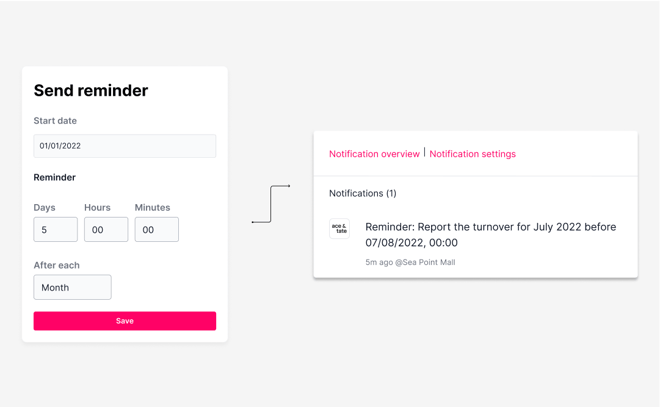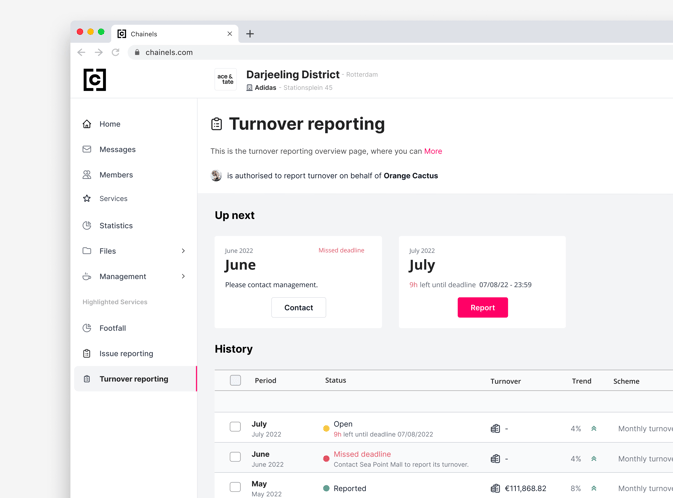In many retail and hospitality real estate portfolios outside of the Netherlands, performance-based rent is the predominantly-used rent model for landlords and their tenants. This is when a base rent is clearly established and then the rental invoice is adjusted based on how a tenant’s business is performing over a specified time period. When a tenant within a shopping centre or retail district generates a higher turnover, the landlord would receive a higher rent. During less profitable times, the tenant would then pay less rent. This can be beneficial to tenants, especially when COVID-19 lockdowns forced stores to close, having a significant impact on the ‘non-essential’ sectors of retail and hospitality.
For example, the impacts of corona regulations on tenants led to requests to not pay rent. In turn, landlords introduced turnover rent models because they wanted to get better insights from their tenants. By changing their strategy to sharing the tenant’s turnover data, landlords could make a proposal for reduced rent.
Share risk and reward
By using a turnover rent model, landlords and tenants share risk and reward more evenly. Of course landlords can benefit if the tenants are doing well, and when tenants are not doing well, proactive collaboration can help improve the situation for a tenant while there is time to improve their bottom line. But a frequently asked question is: how can landlords regularly collect accurate turnover information from tenants? For landlords with many tenants, the process of retrieving store performance insights from tenants is time-intensive.
Regular reminders cause landlord-tenant friction
To request turnover data from tenants, landlords typically employ a mandatory workflow. When a retailer is busy with their business activities and is receiving many reminders and phone calls from property management companies to send their turnover information, friction between tenants and landlords can be created. Generally, landlords find this process of collecting performance data to be slow and difficult. If they don’t know how their tenant is performing, then the turnover-adjusted rent invoice can’t be made in time. And, of course the performance-adjusted rent invoice is beneficial to the tenant if they are under-performing during this period. Fortunately, there are better solutions than manually chasing tenants for data.

Let a digital system improve the process
Chainels’ Turnover Reporting module automatically requests and reminds tenants to submit their turnover, removing the negativity associated with regular confrontations or tense situations with tenants. Chainels is unique because landlords can employ multiple schemes. If the tenant agrees, landlords can receive data on a weekly basis, giving landlords even better insight into tenants’ performance. With more information, landlords can better advise a client to relocate which can bring more traffic to their store for example. By easing the process of sharing data as well as removing the personal aspect via a system doing the reminding, a healthy landlord-tenant relationship is maintained.
Incentivise with data exchanges
Even if there is no obligation for a tenant to report its turnover data to landlords, regular performance reporting can create a win-win situation. To encourage performance reporting, the landlord can provide relevant data insights in return. This generates an incentive for tenants to report store performance in a timely manner. When tenants share performance data, the landlord can provide footfall data or insights in the catchment area. With information such as visitors’ ages and spending patterns as well as the radius of the area, a tenant can tailor its product offerings to improve its performance. While larger brands have research departments and likely already have this data, smaller retailers can benefit from this information, adjusting their marketing campaigns to their catchment area, and in turn improving their performance. Chainels makes it easy to facilitate this data exchange. Having the Turnover Reporting module in place can improve the collaboration between tenant and landlord by being more transparent. Landlords can then take on an educational role and optimise the tenant mix within the area.

Optimise tenants’ positioning in the centre
Often, there is hesitation for landlords and tenants to be transparent over performance but it can lead to positive outcomes for both parties. Having insights into a retailer’s actual performance in real-time helps create a dialogue between landlords and retailers. For example, if multiple stores are situated next to each other and have overlapping product categories, then it may make sense to relocate a tenant to another location to benefit all tenants. With performance data, a leasing department can make this type of analysis to advise tenants to relocate, giving the right advice at the right time.
Turnover Reporting collects unique insights
Chainels offers landlords the opportunity to receive qualitative feedback from tenants. With an open comment field, tenants can add relevant information to their report which can yield interesting insights. For example, properties can learn the reason tenants had poor performance was due to construction works nearby the shopping centre. Even certain events can contribute to higher turnover than expected. This can help a centre plan its marketing activities for the upcoming year.
Interested to learn more?


